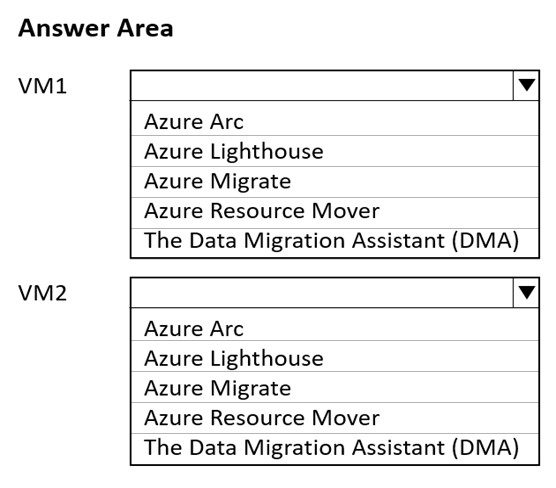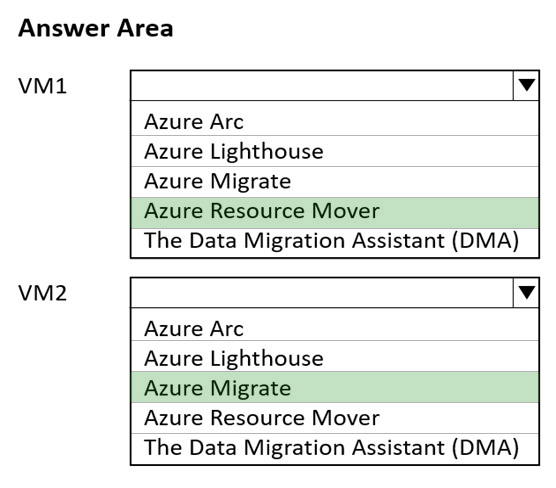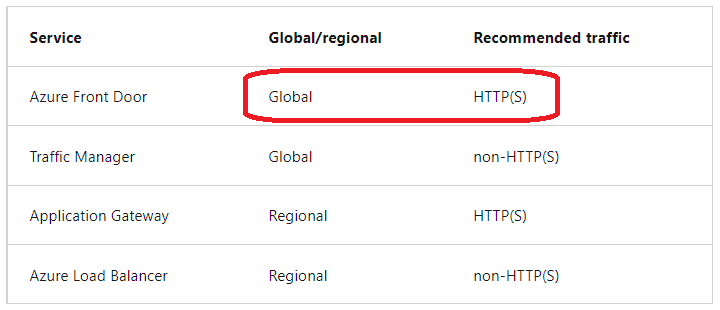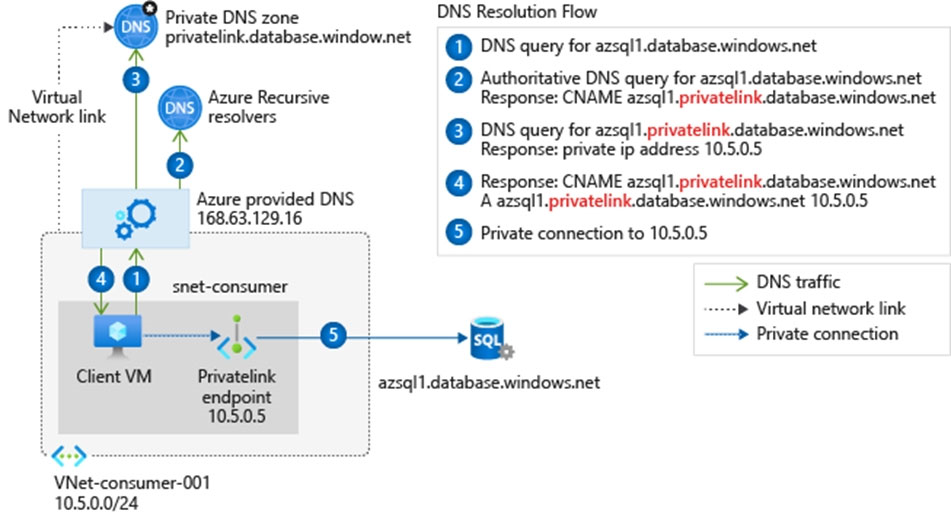You have 100 Microsoft SQL Server Integration Services (SSIS) packages that are configured to use 10 on-premises SQL Server databases as their destinations.
You plan to migrate the 10 on-premises databases to Azure SQL Database.
You need to recommend a solution to create Azure-SQL Server Integration Services (SSIS) packages. The solution must ensure that the packages can target the
SQL Database instances as their destinations.
What should you include in the recommendation?
Answer:
B
Migrate on-premises SSIS workloads to SSIS using ADF (Azure Data Factory).
When you migrate your database workloads from SQL Server on premises to Azure database services, namely Azure SQL Database or Azure SQL Managed
Instance, your ETL workloads on SQL Server Integration Services (SSIS) as one of the primary value-added services will need to be migrated as well.
Azure-SSIS Integration Runtime (IR) in Azure Data Factory (ADF) supports running SSIS packages. Once Azure-SSIS IR is provisioned, you can then use familiar tools, such as SQL Server Data Tools (SSDT)/SQL Server Management Studio (SSMS), and command-line utilities, such as dtinstall/dtutil/dtexec, to deploy and run your packages in Azure.
Reference:
https://docs.microsoft.com/en-us/azure/data-factory/scenario-ssis-migration-overview
You have an Azure virtual machine named VM1 that runs Windows Server 2019 and contains 500 GB of data files.
You are designing a solution that will use Azure Data Factory to transform the data files, and then load the files to Azure Data Lake Storage.
What should you deploy on VM1 to support the design?
Answer:
C
The integration runtime (IR) is the compute infrastructure that Azure Data Factory and Synapse pipelines use to provide data-integration capabilities across different network environments.
A self-hosted integration runtime can run copy activities between a cloud data store and a data store in a private network. It also can dispatch transform activities against compute resources in an on-premises network or an Azure virtual network. The installation of a self-hosted integration runtime needs an on-premises machine or a virtual machine inside a private network.
Reference:
https://docs.microsoft.com/en-us/azure/data-factory/create-self-hosted-integration-runtime
You have an Azure Active Directory (Azure AD) tenant that syncs with an on-premises Active Directory domain.
Your company has a line-of-business (LOB) application that was developed internally.
You need to implement SAML single sign-on (SSO) and enforce multi-factor authentication (MFA) when users attempt to access the application from an unknown location.
Which two features should you include in the solution? Each correct answer presents part of the solution.
NOTE: Each correct selection is worth one point.
Answer:
DE
D: The signals generated by and fed to Identity Protection, can be further fed into tools like Conditional Access to make access decisions, or fed back to a security information and event management (SIEM) tool for further investigation based on your organization's enforced policies.
Note: Identity Protection is a tool that allows organizations to accomplish three key tasks:
Automate the detection and remediation of identity-based risks.
Investigate risks using data in the portal.
Export risk detection data to your SIEM.
E: The location condition can be used in a Conditional Access policy.
Conditional Access policies are at their most basic an if-then statement combining signals, to make decisions, and enforce organization policies. One of those signals that can be incorporated into the decision-making process is location.
Organizations can use this location for common tasks like:
* Requiring multi-factor authentication for users accessing a service when they're off the corporate network.
* Blocking access for users accessing a service from specific countries or regions.
The location is determined by the public IP address a client provides to Azure Active Directory or GPS coordinates provided by the Microsoft Authenticator app.
Conditional Access policies by default apply to all IPv4 and IPv6 addresses.
Incorrect:
Not A: Privileged Identity Management (PIM) is a service in Azure Active Directory (Azure AD) that enables you to manage, control, and monitor access to important resources in your organization. These resources include resources in Azure AD, Azure, and other Microsoft Online Services such as Microsoft 365 or
Microsoft Intune.
Reference:
https://docs.microsoft.com/en-us/azure/active-directory/identity-protection/overview-identity-protection https://docs.microsoft.com/en-us/azure/active-directory/conditional-access/location-condition
You plan to automata the deployment of resources to Azure subscriptions.
What is a difference between using Azure Blueprints and Azure Resource Manager (ARM) templates?
Answer:
D
With Azure Blueprints, the relationship between the blueprint definition (what should be deployed) and the blueprint assignment (what was deployed) is preserved.
This connection supports improved tracking and auditing of deployments.
Incorrect:
Not A: An ARM template is a document that doesn't exist natively in Azure - each is stored either locally or in source control or in Templates (preview). The template gets used for deployments of one or more Azure resources, but once those resources deploy there's no active connection or relationship to the template.
Not C: Blueprints are a declarative way to orchestrate the deployment of various resource templates and other artifacts such as:
Role Assignments -
Policy Assignments -
Azure Resource Manager templates (ARM templates)
Resource Groups -
Reference:
https://docs.microsoft.com/en-us/azure/governance/blueprints/overview#how-its-different-from-resource-manager-templates
HOTSPOT -
You have the resources shown in the following table.
You create a new resource group in Azure named RG2.
You need to move the virtual machines to RG2.
What should you use to move each virtual machine? To answer, select the appropriate options in the answer area.
NOTE: Each correct selection is worth one point.
Hot Area:
Answer:

Box 1: Azure Resource Mover -
To move Azure VMs to another region, Microsoft now recommends using Azure Resource Mover.
Incorrect:
Not Azure Migrate: We are not migrating, only moving a VM between resource groups.
Box 2: Azure Migrate -
Azure Migrate provides a centralized hub to assess and migrate on-premises servers, infrastructure, applications, and data to Azure.
Azure migrate includes Azure Migrate Server Migration: Migrate VMware VMs, Hyper-V VMs, physical servers, other virtualized servers, and public cloud VMs to
Azure.
Incorrect:
Not Arc: Azure Migrate is adequate. No need to use Azure Arc.
Not Data Migration Assistant: Data Migration Assistant is a stand-alone tool to assess SQL Servers.
It is used to assess SQL Server databases for migration to Azure SQL Database, Azure SQL Managed Instance, or Azure VMs running SQL Server.
Not Lighthouse: Azure Lighthouse enables multi-tenant management with scalability, higher automation, and enhanced governance across resources.
With Azure Lighthouse, service providers can deliver managed services using comprehensive and robust tooling built into the Azure platform. Customers maintain control over who has access to their tenant, which resources they can access, and what actions can be taken.
Reference:
https://docs.microsoft.com/en-us/azure/resource-mover/overview https://docs.microsoft.com/en-us/azure/migrate/migrate-services-overview https://docs.microsoft.com/en-us/azure/site-recovery/azure-to-azure-tutorial-migrate
You plan to deploy an Azure App Service web app that will have multiple instances across multiple Azure regions.
You need to recommend a load balancing service for the planned deployment The solution must meet the following requirements:
✑ Maintain access to the app in the event of a regional outage.
✑ Support Azure Web Application Firewall (WAF).
✑ Support cookie-based affinity.
✑ Support URL routing.
What should you include in the recommendation?
Answer:
A
Azure Front Door works across regions and support URL routing (HTTP(S)).
Note: HTTP(S) load-balancing services are Layer 7 load balancers that only accept HTTP(S) traffic. They are intended for web applications or other HTTP(S) endpoints. They include features such as SSL offload, web application firewall, path-based load balancing, and session affinity.
Incorrect:
Application Gateway and Azure Load Balancer only work within one single region.
Reference:
https://docs.microsoft.com/en-us/azure/architecture/guide/technology-choices/load-balancing-overview
HOTSPOT -
You have the Azure resources shown in the following table.
You need to design a solution that provides on-premises network connectivity to SQLDB1 through PE1.
How should you configure name resolution? To answer select the appropriate options in the answer area.
NOTE: Each correct selection is worth one point.
Hot Area:
Answer:

Box 1:In VNET1, configure a custom DNS server set to the Azure provided DNS at 168.63.129.16
Virtual network workloads without custom DNS server.
This configuration is appropriate for virtual network workloads without a custom DNS server. In this scenario, the client queries for the private endpoint IP address to the Azure-provided DNS service 168.63.129.16. Azure DNS will be responsible for DNS resolution of the private DNS zones.
The following screenshot illustrates the DNS resolution sequence from virtual network workloads using the private DNS zone:
Box 2: Forward contoso.com to VM1
Forward to the DNS server VM1.
Note: You can use the following options to configure your DNS settings for private endpoints:
* Use the host file (only recommended for testing). You can use the host file on a virtual machine to override the DNS.
* Use a private DNS zone. You can use private DNS zones to override the DNS resolution for a private endpoint. A private DNS zone can be linked to your virtual network to resolve specific domains.
* Use your DNS forwarder (optional). You can use your DNS forwarder to override the DNS resolution for a private link resource. Create a DNS forwarding rule to use a private DNS zone on your DNS server hosted in a virtual network.
Reference:
https://docs.microsoft.com/en-us/azure/private-link/private-endpoint-dns
You are designing a microservices architecture that will support a web application.
The solution must meet the following requirements:
✑ Deploy the solution on-premises and to Azure.
Support low-latency and hyper-scale operations.
✑ Allow independent upgrades to each microservice.
✑ Set policies for performing automatic repairs to the microservices.
You need to recommend a technology.
What should you recommend?
Answer:
C
Azure Service Fabric enables you to create Service Fabric clusters on premises or in other clouds.
Azure Service Fabric is low-latency and scales up to thousands of machines.
Reference:
https://azure.microsoft.com/en-us/services/service-fabric/
Note: This question is part of a series of questions that present the same scenario. Each question in the series contains a unique solution that might meet the stated goals. Some question sets might have more than one correct solution, while others might not have a correct solution.
After you answer a question in this section, you will NOT be able to return to it. As a result, these questions will not appear in the review screen.
You plan to deploy multiple instances of an Azure web app across several Azure regions.
You need to design an access solution for the app. The solution must meet the following replication requirements:
✑ Support rate limiting.
✑ Balance requests between all instances.
✑ Ensure that users can access the app in the event of a regional outage.
Solution: You use Azure Front Door to provide access to the app.
Does this meet the goal?
Answer:
A
Azure Front Door meets the requirements. The Azure Web Application Firewall (WAF) rate limit rule for Azure Front Door controls the number of requests allowed from clients during a one-minute duration.
Reference:
https://www.nginx.com/blog/nginx-plus-and-azure-load-balancers-on-microsoft-azure/ https://docs.microsoft.com/en-us/azure/web-application-firewall/afds/waf-front-door-rate-limit-powershell
You need to recommend a solution to generate a monthly report of all the new Azure Resource Manager (ARM) resource deployments in your Azure subscription.
What should you include in the recommendation?
Answer:
A
Activity logs are kept for 90 days. You can query for any range of dates, as long as the starting date isn't more than 90 days in the past.
Through activity logs, you can determine:
✑ what operations were taken on the resources in your subscription
✑ who started the operation
when the operation occurred
✑ the status of the operation
✑ the values of other properties that might help you research the operation
Reference:
https://docs.microsoft.com/en-us/azure/azure-resource-manager/management/view-activity-logs